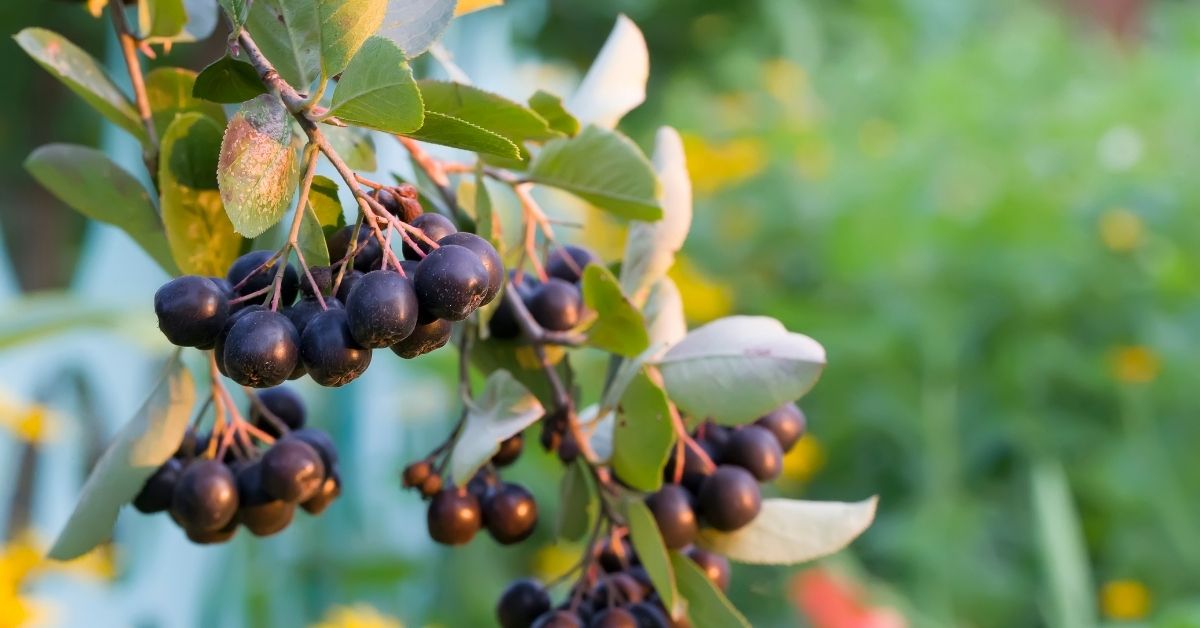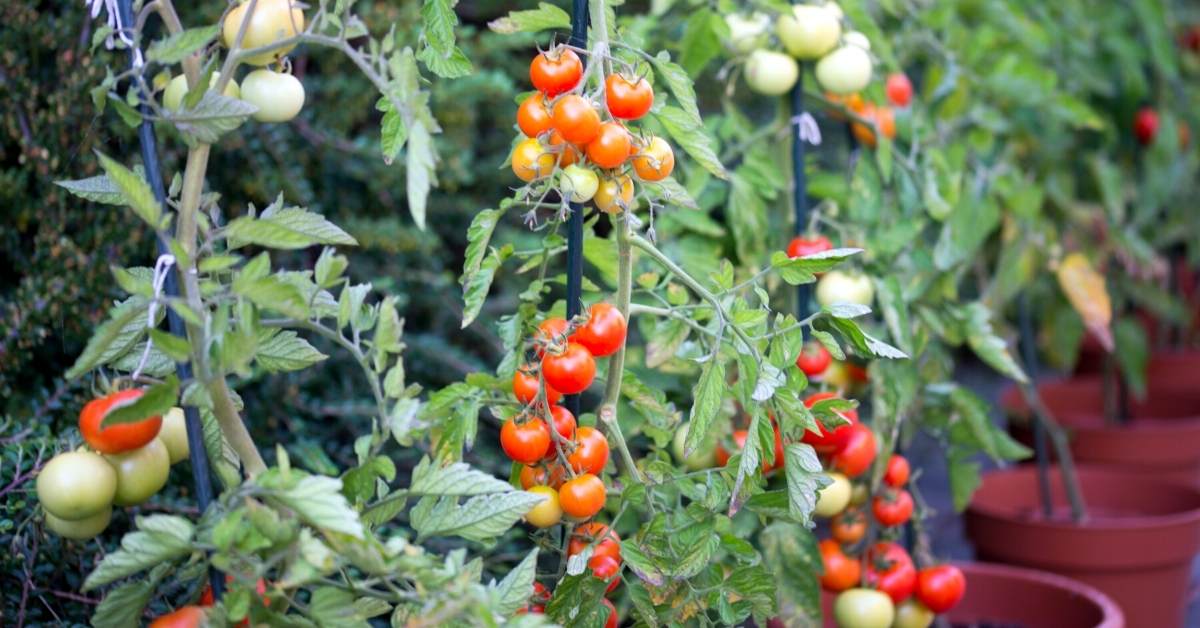The African White Daisy, scientifically known as Osteospermum O. ‘Prostratum’ ‘Soprano White’, is a perennial plant that is cherished by gardeners worldwide for its brilliant white flowers and bright sapphire blue eyes. Originating from the warm climates of Africa, this daisy has found its way into the hearts and gardens of many due to its stunning beauty and relatively easy maintenance.
Whether you’re a seasoned gardener or a beginner looking to add a touch of elegance to your garden, the African White Daisy is a fantastic choice. In this comprehensive guide, we will delve into everything you need to know about growing and caring for this beautiful plant. From understanding its ideal growing conditions to mastering the art of propagation, we’ve got you covered. So, let’s embark on this exciting gardening journey together.
Understanding the African White Daisy
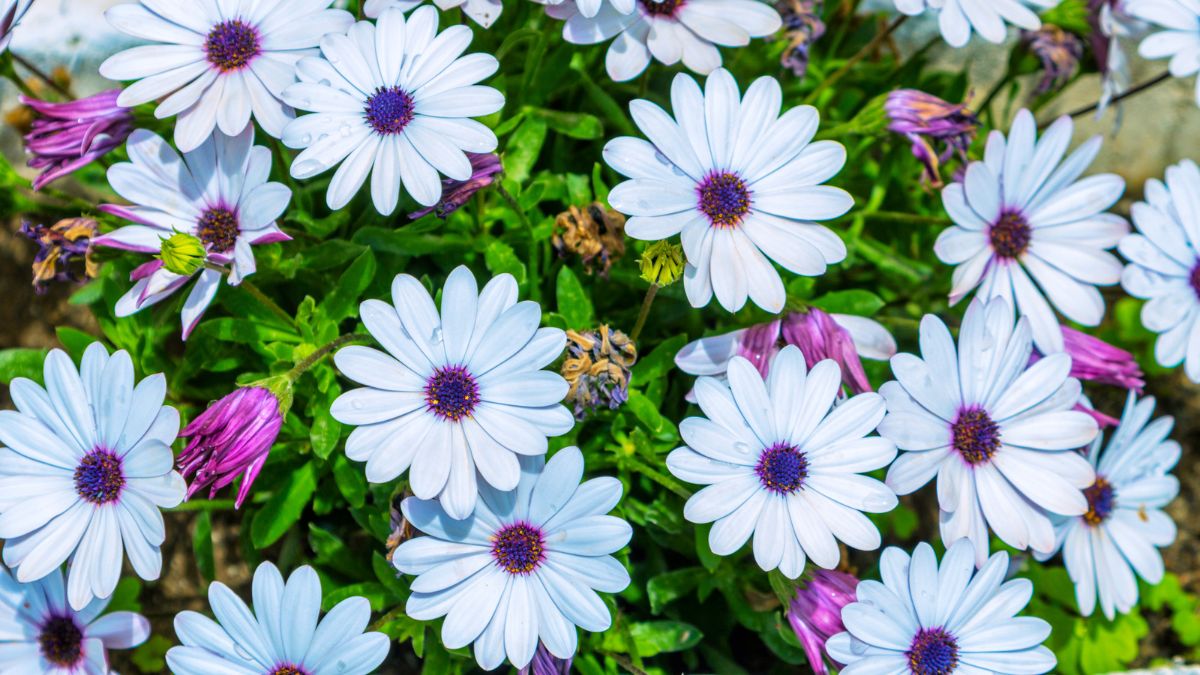
The African White Daisy, known in the botanical world as Osteospermum ‘Soprano White’, is a captivating perennial that belongs to the Osteospermum family. This family is a vibrant collection of plants often referred to as African Daisies, a testament to their origins in the warm, sunny climates of Africa.
The African White Daisy is a bushy, evergreen plant that stands out in any garden with its radiant white daisy-like flowers. Each flower is a masterpiece in itself, adorned with a bright sapphire blue eye at the center, creating a striking contrast against the pure white petals. These blossoms are not only a visual delight but also a magnet for pollinators, attracting bees and butterflies, thereby promoting biodiversity in your garden.
One of the remarkable features of the African White Daisy is its adaptability. It can thrive in various climate zones, from 8 to 24, making it a versatile choice for gardeners across different geographical locations. The plant’s height ranges from 8″ to 2′ (20cm to 60cm), and it spreads about 1′ to 2′ (30cm to 60cm), making it an ideal choice for both beds and borders, as well as patio containers.
The African White Daisy is not a one-size-fits-all plant. There are several types within the species, each with its unique characteristics. The ‘Soprano White’ variety, for instance, is known for its bushy growth and profuse flowering. Understanding these variations is key to choosing the right African White Daisy for your garden and ensuring it thrives.
In the following sections, we’ll delve deeper into the ideal growing conditions for the African White Daisy, providing you with the knowledge you need to cultivate this stunning plant successfully. Whether you’re planning to grow it in your garden bed, border, or container, the African White Daisy is a rewarding addition that will bring a pleasing pop of color to your garden.
Ideal Growing Conditions for African White Daisy
The African White Daisy, or Osteospermum ‘Soprano White’, is a resilient plant that can adapt to a variety of environments. However, like all plants, it has its preferences, and understanding these will ensure your African White Daisy not only survives but thrives in your garden.
Growing Zones: The African White Daisy is hardy in USDA zones 10 to 11. It can also tolerate heat zones from 1 to 6. This means it’s well-suited to regions with mild winters and long, warm summers. However, it can also be grown as an annual in areas beyond its hardiness range.
Light Conditions: This plant loves the sun. For the best flowering results, ensure your African White Daisy is positioned in a location that receives full sun exposure. The bright, direct sunlight encourages the plant to produce its vibrant, white flowers, enhancing the overall aesthetic appeal of your garden.
Temperature and Humidity: African White Daisies are heat-loving plants, which is no surprise given their African origins. They can withstand high temperatures and low humidity levels, making them an excellent choice for hot, dry climates. However, they also have a good tolerance for cooler conditions, especially in the fall.
Soil Requirements: When it comes to soil, African White Daisies are not overly fussy. They can grow in a range of soil types, including chalk, loam, and sand. The key requirement is well-drained soil. These plants do not like to have ‘wet feet’ and can suffer from root rot if the soil is too waterlogged. The ideal soil pH is neutral to alkaline.
Understanding these ideal growing conditions is the first step towards successful African White Daisy cultivation. With this knowledge in hand, you can create an environment that allows your African White Daisy to flourish, bringing a touch of nature’s brilliance to your garden.
Now let’s explore the planting process in detail, providing you with practical tips to get your African White Daisy off to the best possible start.
Planting the African White Daisy
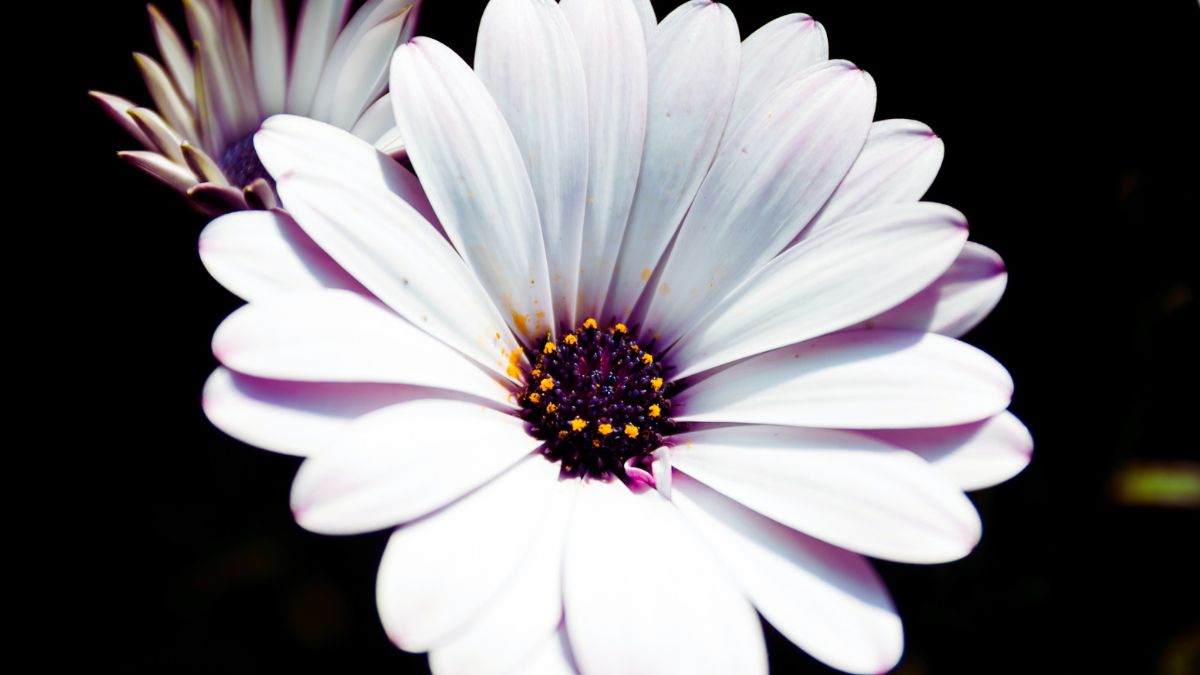
Planting the African White Daisy, or Osteospermum ‘Soprano White’, is a rewarding endeavor that begins with understanding the plant’s specific needs. Here’s a step-by-step guide to ensure your African White Daisy gets off to a great start.
When to Plant:
The best time to plant African White Daisies is in the spring after the last frost has passed. This gives the plant plenty of time to establish its roots before the hot summer weather sets in.
Choosing the Right Location:
African White Daisies thrive in full sun, so choose a location in your garden that receives plenty of sunlight throughout the day. If you’re planting in a container, make sure it’s placed in a sunny spot.
Preparing the Soil:
African White Daisies prefer well-drained soil. You can improve the drainage of your soil by adding organic matter or compost. The ideal soil pH is neutral to alkaline. If your soil is too acidic, you can add lime to increase the pH.
Planting the Daisy:
Dig a hole that’s twice as wide and the same depth as the root ball of your African White Daisy. Place the plant in the hole, making sure the top of the root ball is level with the soil surface. Backfill the hole with soil, firming it gently around the base of the plant.
Spacing:
To ensure healthy growth and good air circulation, space your African White Daisies about 12″ to 15″ (30cm to 37cm) apart.
Watering:
After planting, water your white African daisy thoroughly. This helps to settle the soil around the roots and ensures the plant is well-hydrated.
Mulching:
Applying a layer of mulch around the base of the plant can help to conserve moisture and suppress weeds. However, be careful not to mound the mulch against the stem of the plant, as this can cause rot.
Planting your African White Daisy correctly is the first step towards a healthy and vibrant plant. In the next section, we’ll delve into the ongoing care requirements for your African White Daisy, ensuring it continues to thrive and bring beauty to your garden.
Caring for Your African White Daisy
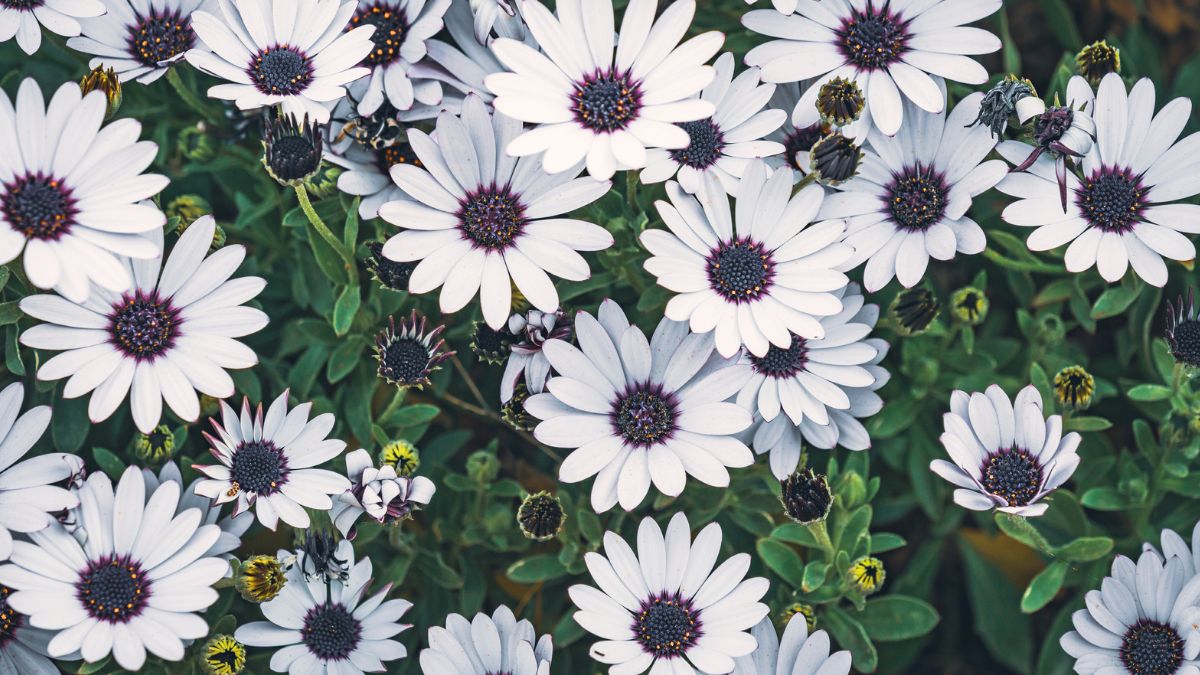
Once your African White Daisy, or Osteospermum ‘Soprano White’, is planted, ongoing care is crucial to ensure it grows healthily and produces a profusion of beautiful white flowers. Here are some key care tips for your African White Daisy:
Watering:
African White Daisies are drought-tolerant plants, but they still appreciate regular watering. The key is to avoid overwatering, which can lead to root rot. Water your plant thoroughly, then allow the top inch of soil to dry out before watering again. In hotter months, you may need to water more frequently.
Fertilizing:
To promote vigorous growth and abundant flowering, feed your African White Daisy with a balanced, slow-release fertilizer in the spring. Follow the instructions on the fertilizer package to determine the correct amount.
Pruning:
Pruning helps to maintain the shape of your African White Daisy and encourages more blooms. In early spring, trim back the plant to about half its size. During the growing season, deadhead spent flowers to encourage continuous blooming.
Deadheading:
Deadheading, or removing faded flowers, encourages the plant to produce more blooms. Regularly check your African White Daisy for spent flowers and remove them by pinching them off at the base of the flower stem.
Mulching:
Mulching helps to conserve soil moisture and suppress weed growth. Apply a 2-3 inch layer of organic mulch around the base of the plant, but be careful not to mound the mulch against the stem, as this can lead to rot.
Caring for your African White Daisy doesn’t have to be a daunting task. With regular watering, appropriate fertilizing, and timely pruning, you can ensure your plant remains healthy and vibrant. In the next section, we’ll explore the fascinating world of propagating your African White Daisy, allowing you to multiply the beauty in your garden.
Propagating the African White Daisy
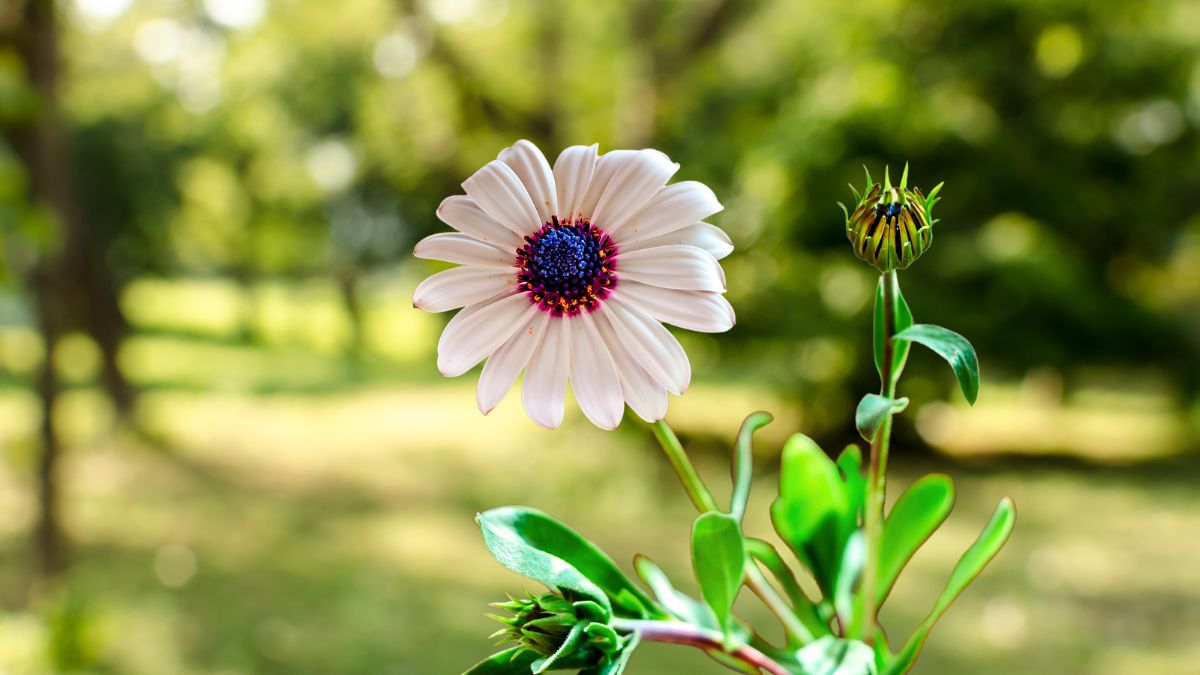
Propagating the African White Daisy, or Osteospermum ‘Soprano White’, allows you to multiply your plants and spread their beauty throughout your garden. There are several methods of propagation you can use: from seeds, cuttings, or division.
Propagation from Seeds:
Starting African White Daisies from seeds can be a rewarding process, although it may take longer than other methods. Sow the seeds indoors 6-8 weeks before the last expected frost. Plant the seeds in a seed-starting mix, lightly covering them with soil. Keep the soil moist and maintain a temperature of about 70°F (21°C) until germination, which usually occurs within 2-3 weeks.
Propagation from Cuttings:
This is perhaps the most common method of propagating African White Daisies. In late spring or early summer, take a 4-6 inch cutting from a healthy plant. Remove the lower leaves and dip the cut end in the rooting hormone. Plant the cutting in a pot filled with a mix of peat and perlite. Keep the soil moist and place the pot in a location with bright, indirect light. Roots should develop within a few weeks.
Propagation from Division:
African White Daisies can also be propagated by division. This involves splitting an established plant into several smaller ones, each with its own root system. The best time to divide African White Daisies is in the early spring before new growth begins. Carefully dig up the plant, divide it into sections using a sharp knife, and replant the divisions at the same depth they were originally growing.
Each of these propagation methods has its own advantages, and the best one for you depends on your resources and preferences. Whichever method you choose, propagating your African White Daisy allows you to expand your garden’s beauty and share it with others. In the next section, we’ll discuss how to overwinter your African White Daisy, ensuring it survives the colder months and returns with vigor in the spring.
Overwintering the African White Daisy
While the African White Daisy, or Osteospermum ‘Soprano White’, is a hardy plant, it may need some extra care to survive the winter months, especially in areas with harsh winters. Here’s how to overwinter your African White Daisy:
In the Ground:
If you live in a region where winter temperatures stay above freezing (USDA hardiness zones 10-11), your African White Daisy can remain in the ground throughout the winter. However, it’s a good idea to apply a layer of mulch around the base of the plant to protect the roots from any unexpected cold snaps.
In Containers:
If your African White Daisy is in a container, you have the option to bring it indoors for the winter. Before the first frost, move your plant to a bright, cool location indoors, such as a sunroom or a south-facing window. Keep the soil lightly moist throughout the winter.
Overwintering as Annuals:
In colder regions (zones 9 and below), African White Daisies are often grown as annuals. However, if you want to save your plants, you can take cuttings in the fall and root them indoors over the winter. Come spring; you’ll have new plants ready to go outside.
Winter Care:
Whether indoors or out, your African White Daisy will likely enter a period of dormancy in the winter. This means it will require less water, but make sure the soil doesn’t completely dry out. Also, hold off on fertilizing until new growth appears in the spring.
Overwintering your African White Daisy ensures that this beautiful plant will continue to grace your garden with its presence year after year. In the next section, we’ll explore the concept of companion planting and how it can benefit your African White Daisy.
Companion Planting with African White Daisy
Companion planting is a gardening technique that involves growing different plants together for mutual benefit. When it comes to the African White Daisy or Osteospermum ‘Soprano White’, there are several plants that make excellent companions.
Complementary Colors:
African White Daisies have brilliant white flowers that can provide a striking contrast to plants with darker or more vibrant hues. Consider pairing them with plants that have purple, blue, or deep red flowers for a visually stunning display. Some good options include Salvia, which has deep blue or purple flowers, or Heuchera, which offers a variety of leaf and flower colors.
Similar Growing Conditions:
It’s also important to choose companion plants that have similar growing conditions to the African White Daisy. This includes full sun exposure and well-drained soil. Some plants that meet these criteria include Lavender, Rosemary, and Thyme.
Beneficial Companions:
Some plants can help deter pests that may be attracted to your African White Daisies. Marigolds, for example, are known to repel a variety of insect pests and could be a beneficial companion.
African Daisy Companion Plants:

African Daisies look great when paired with other plants that share their growing conditions and enhance their beauty. Here are some plants that work well with African Daisies:
- Alyssum: These low-growing plants produce masses of tiny white, pink, or purple flowers that contrast nicely with the larger blooms of African Daisies. They also like full sun and well-draining soil and attract beneficial insects.
- Heuchera: Also known as coral bells, these plants have colorful foliage that ranges from green to purple to bronze. They can add a splash of color and texture to the garden, while both plants prefer well-draining soil and partial shade.
- Rosemary: This aromatic herb has needle-like leaves and blue flowers that complement the colors of African Daisies. Both plants enjoy full sun and dry soil and are drought-tolerant.
- Thyme: Another fragrant herb, thyme has small leaves and flowers that can create a carpet of color around the base of African Daisies. Both plants like full sun and well-draining soil and are deer-resistant.
- Lobelia: These trailing plants have delicate flowers in shades of blue, purple, pink, or white that can create a lovely contrast with the bold blooms of African Daisies. They also prefer full sun and moist soil and are great for containers or hanging baskets.
- Dusty miller: The gray-green foliage of dusty miller can create a striking contrast with the bright flowers of African Daisies. Both plants like full sun and well-draining soil and are drought-tolerant.
- Calibrachoa: These plants have small, bell-shaped flowers in various colors that can match or contrast with the colors of African Daisies. They also like full sun and well-draining soil and are great for containers or hanging baskets.
- Marigold: These plants have cheerful flowers in shades of yellow, orange, or red that can add a pop of color to the garden. They also like full sun and well-draining soil and are easy to grow.
- Verbena: These plants have clusters of small flowers in different colors that can create a stunning combination with the large blooms of African Daisies. They also like full sun and well-draining soil and attract pollinators.
- Petunia: These plants have showy flowers in a wide range of colors that can complement or contrast with the colors of African Daisies. They also like full sun and well-draining soil and are good for borders or containers.
- Ornamental grasses: These plants have fine-textured foliage that can provide an interesting contrast with the bold flowers of African Daisies. They also like sunny locations and are drought-tolerant.
- Coreopsis: These plants have daisy-like flowers in shades of yellow, orange, or red that can harmonize with the colors of African Daisies. They also like full sun and well-draining soil and attract pollinators.
- Echinacea: These plants have cone-shaped flowers in various colors that resemble daisies. They can create a beautiful display when planted next to African Daisies. They also like full sun and well-draining soil and attract pollinators.
- Lavender: These plants have silvery foliage and fragrant purple flowers that can enhance the beauty of African Daisies. They also like full sun and well-draining soil and are drought-tolerant.
- Salvia: These plants have spikes of flowers in different colors that can add height and texture to the garden. They also like full sun and well-draining soil and attract pollinators.
When choosing companion plants for African Daisies, make sure they have similar growing requirements and complement their appearance. This will help create a healthy and attractive garden.
Size Considerations:
When choosing companion plants, consider their mature size. You don’t want to pair your African White Daisy with a plant that will overshadow it or compete for resources. Plants that grow to a similar size or smaller, such as Alyssum or Lobelia, can be good choices.
Companion planting can enhance the health and visual appeal of your garden. By carefully selecting companion plants for your African White Daisy, you can create a garden that is both beautiful and beneficial. In the next section, we’ll discuss common problems, pests, and diseases that can affect your African White Daisy and how to deal with them.
Common Problems, Pests, and Diseases
While the African White Daisy, or Osteospermum ‘Soprano White’, is a relatively hardy plant, it can still be susceptible to certain problems, pests, and diseases. Here’s what to watch out for and how to address these issues:
Aphids:
These small, sap-sucking insects can cause the leaves of your African White Daisy to curl and turn yellow. If you notice aphids on your plant, you can remove them by spraying the plant with a strong jet of water or by using insecticidal soap.
Downy Mildew:
This fungal disease can cause yellowing leaves and a white, powdery substance on the underside of the leaves. To prevent downy mildew, ensure your African White Daisy has good air circulation and avoid overhead watering. If your plant is infected, remove the affected leaves and treat the plant with a fungicide.
Verticillium Wilt:
This soil-borne fungus can cause wilting and yellowing leaves. Unfortunately, there is no cure for verticillium wilt, and infected plants should be removed and destroyed. To prevent this disease, ensure your soil is well-drained and rotate your plantings each year.
Overwatering:
African White Daisies are drought-tolerant and can suffer from root rot if overwatered. Make sure your plant is in well-drained soil, and reduce watering during cooler months.
Heat Stress:
While African White Daisies love the sun, they can struggle in extreme heat. If your plant’s leaves are wilting or turning brown in the summer, it may be suffering from heat stress. Provide your plant with some shade during the hottest part of the day and ensure it is receiving enough water.
By keeping an eye out for these common problems and addressing them promptly, you can keep your African White Daisy healthy and vibrant. In the next section, we’ll wrap up our comprehensive guide to growing and caring for the African White Daisy.
Conclusion
The African White Daisy, or Osteospermum ‘Soprano White’, is a truly remarkable plant. With its radiant white flowers and bright blue eyes, it adds a touch of elegance and beauty to any garden. But beyond its aesthetic appeal, this plant is also a testament to resilience and adaptability, capable of thriving in a variety of conditions.
From understanding the ideal growing conditions to mastering the art of propagation, we’ve explored the many aspects of African White Daisy care. We’ve learned that with the right care and attention, this plant can flourish and become a standout feature in your garden.
Whether you’re a seasoned gardener or a beginner, the African White Daisy is a rewarding plant to grow. It’s a plant that asks for little but gives back so much in return. So why wait? Embark on your African White Daisy gardening journey today and experience the joy and satisfaction that comes with nurturing this stunning plant.
Remember, gardening is not just about the end result. It’s about the journey, the learning, and the growth that happens along the way. So, embrace the process, and before you know it, you’ll have a garden filled with beautiful African White Daisies.
Thank you for joining us on this gardening adventure. We hope this guide has equipped you with the knowledge and confidence to grow your own African White Daisy. Happy gardening!
What is the scientific name of the African White Daisy?
The scientific name of the African White Daisy is Osteospermum ‘Soprano White’. It belongs to the Osteospermum family, which is a collection of plants often referred to as African Daisies.
How do I propagate the African White Daisy?
You can propagate the African White Daisy by seeds, cuttings, or division. Seeds can be sown indoors 6-8 weeks before the last frost. Cuttings can be taken in late spring or early summer and rooted in a pot. Division can be done in early spring by splitting an established plant into smaller sections.
How do I overwinter the African White Daisy?
The African White Daisy is hardy in USDA zones 10 to 11. If you live in a colder region, you can either bring your container-grown plant indoors for the winter or take cuttings in the fall and root them indoors. If you leave your plant outdoors, make sure to apply a layer of mulch around the base to protect the roots from frost.
What are some companion plants for the African White Daisy?
Some companion plants for the African White Daisy are Salvia, Heuchera, Lavender, Rosemary, Thyme, Marigolds, Alyssum, and Lobelia. These plants have complementary colors, similar growing conditions, or beneficial effects for the African White Daisy.
How do I deal with common pests and diseases that affect the African White Daisy?
Some common pests and diseases that affect the African White Daisy are aphids, downy mildew, verticillium wilt, overwatering, and heat stress. You can prevent or treat these problems by spraying the plant with water or insecticidal soap for aphids, improving air circulation and avoiding overhead watering for downy mildew, removing and destroying infected plants for verticillium wilt, reducing watering during cooler months for overwatering, and providing some shade during the hottest part of the day for heat stress.
What are some benefits of growing the African White Daisy in my garden?
Some benefits of growing the African White Daisy in your garden are: it adds a touch of elegance and beauty to your garden with its radiant white flowers and bright blue eyes; it attracts pollinators such as bees and butterflies, promoting biodiversity in your garden; it is a resilient and adaptable plant that can thrive in various climate zones and soil types; it is easy to propagate and share with others; and it is a rewarding plant to grow that brings joy and satisfaction.
